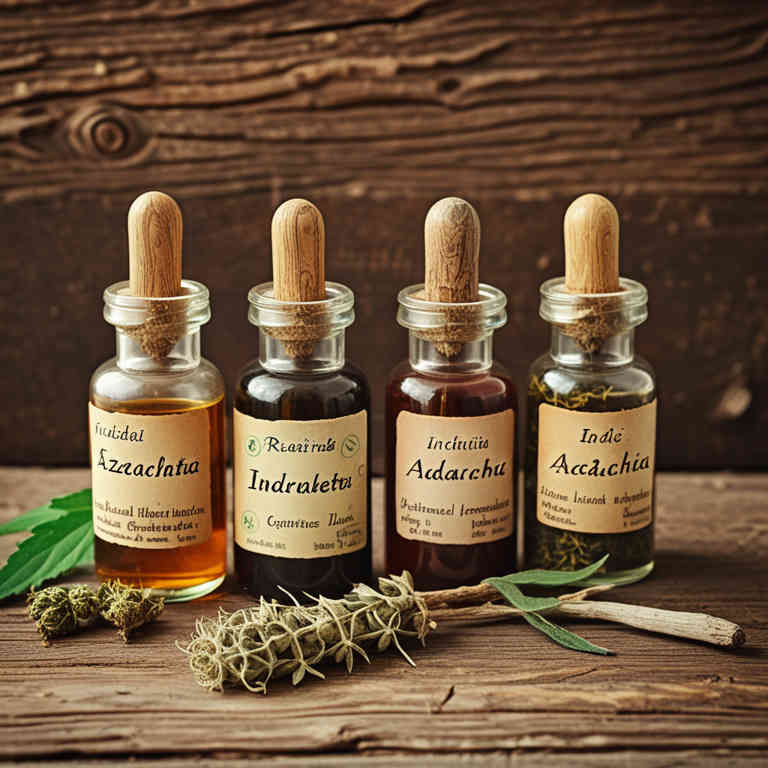10 Best Azadirachta Indica Preparations

The best medicinal preparations of Azadirachta indica are teas, decoctions, oils, tinctures, and creams, each offering unique benefits for health and wellness.
Teas made from the leaves are commonly used to support immune function and digestive health.
Decoctions involve simmering the bark or seeds to extract potent compounds with antimicrobial properties.
Essential oils derived from the plant are used in aromatherapy and topical applications for their insect-repelling and anti-inflammatory effects.
Tinctures provide a concentrated form of the herb, often used for internal and external treatments.
Creams infused with Azadirachta indica are popular for their skin-soothing and antifungal properties.
Below there's a list of the 10 best herbal preparations of azadirachta indica for medicinal purposes.
1. Teas
Azadirachta indica teas is commonly used to treat a variety of health conditions, including respiratory infections, skin disorders, and digestive issues.
This herbal preparation is widely recognized for its antimicrobial, anti-inflammatory, and antiviral properties. It is often used to alleviate symptoms of colds, coughs, and asthma due to its ability to reduce inflammation and support immune function. The bioactive constituents responsible for these effects include limonoids, flavonoids, and triterpenoids, which exhibit potent antioxidant and immunomodulatory activities.
Additionally, it has been traditionally used to manage skin conditions like acne and eczema due to its antimicrobial and anti-inflammatory effects.

2. Decoctions
Azadirachta indica decoctions is commonly used to treat a variety of ailments including skin infections, fever, and digestive issues.
These decoctions are often prepared by boiling the leaves, seeds, or bark of the neem tree in water to extract its active compounds. The most common medicinal uses include managing skin conditions like eczema and psoriasis, reducing inflammation, and supporting immune function. Bioactive constituents such as azadirachtin, nimbin, and nimbolide are responsible for the plant's antimicrobial, antifungal, and anti-inflammatory properties.
These compounds work synergistically to provide the therapeutic benefits associated with neem decoctions.

3. Oils
Azadirachta indica oils is commonly used to treat a variety of ailments, including skin infections, parasitic infestations, and inflammatory conditions.
These oils are widely utilized in traditional medicine for their antimicrobial, antifungal, and antiparasitic properties. The most common medicinal uses include treating acne, fungal infections, and even as a natural insect repellent. Bioactive constituents such as azadirachtin, nimbin, and nimbidin are responsible for the oil's therapeutic effects.
These compounds exhibit anti-inflammatory, immunomodulatory, and antioxidant activities, making the oil a valuable herbal preparation in both traditional and modern medicinal practices.

4. Tinctures
Azadirachta indica tinctures is commonly used to treat a variety of ailments, including skin infections, parasitic infestations, and inflammatory conditions.
These tinctures are widely utilized in traditional medicine for their antimicrobial, antifungal, and antiparasitic properties. They are also used to alleviate symptoms of respiratory infections and as a natural insect repellent. The bioactive constituents responsible for these effects include azadirachtin, nimbin, and nimbinine, which exhibit potent biological activities.
These compounds work by disrupting the life cycles of pests and modulating immune responses in humans.

5. Creams
Azadirachta indica creams is commonly used to treat skin conditions, fungal infections, and inflammatory disorders.
These creams are widely applied for their antimicrobial, anti-inflammatory, and antiparasitic properties. The most common medicinal uses include treating acne, eczema, ringworm, and other dermatological issues. They are also used in traditional medicine to alleviate symptoms of skin allergies and wounds.
The bioactive constituents responsible for these effects include azadirachtin, nimbin, nimbinin, and various flavonoids, which exhibit broad-spectrum biological activities.

6. Capsules
Azadirachta indica capsules is commonly used to treat a variety of health conditions, including skin disorders, parasitic infections, and inflammatory diseases.
These capsules are widely utilized for their antimicrobial, antifungal, and antiviral properties, making them effective against acne, fungal infections, and even certain viral infections. The bioactive constituents responsible for these medicinal effects include azadirachtin, nimbin, and nimbidin, which exhibit potent biological activities. Additionally, the capsules may support immune function and have been used traditionally to manage conditions like malaria and diabetes.
Due to its broad spectrum of therapeutic effects, Azadirachta indica remains a valuable herbal remedy in both traditional and complementary medicine.

7. Oinments
Azadirachta indica oinments is commonly used to treat skin infections, acne, and inflammatory conditions due to their antimicrobial and anti-inflammatory properties.
These oinments are widely applied for their ability to combat bacterial and fungal infections, as well as for their soothing effects on irritated skin. The most common medicinal uses include the treatment of eczema, psoriasis, and minor wounds, where they help reduce redness, swelling, and promote healing. The bioactive constituents responsible for these effects include azadirachtin, nimbin, and nimbinin, which exhibit antimicrobial, antifungal, and immunomodulatory activities.
These compounds work synergistically to provide the therapeutic benefits associated with Azadirachta indica oinments.

8. Poultices
Azadirachta indica poultices is commonly used to treat skin infections, inflammation, and parasitic infestations due to its potent antimicrobial and anti-inflammatory properties.
These poultices are often applied topically to wounds, boils, and other skin conditions to promote healing and reduce bacterial growth. The most common medicinal uses include treating fungal infections, eczema, and even certain types of dermatitis. Bioactive constituents such as azadirachtin, nimbin, and nimbolide contribute to its medicinal effects by exhibiting antimicrobial, antifungal, and immunomodulatory activities.
These compounds work synergistically to enhance the body's natural defenses against pathogens and support skin health.

10. Syrups
Azadirachta indica syrups is commonly used to treat a variety of ailments, including respiratory infections, skin conditions, and digestive issues.
These syrups are often employed for their antimicrobial, antiviral, and anti-inflammatory properties. They are particularly popular in traditional medicine for managing symptoms of coughs, colds, and acne. The bioactive constituents responsible for these effects include limonoids, azadirachtin, and flavonoids, which exhibit potent biological activities.
These compounds work synergistically to enhance immune response and reduce inflammation, making the syrup a valuable herbal remedy.
